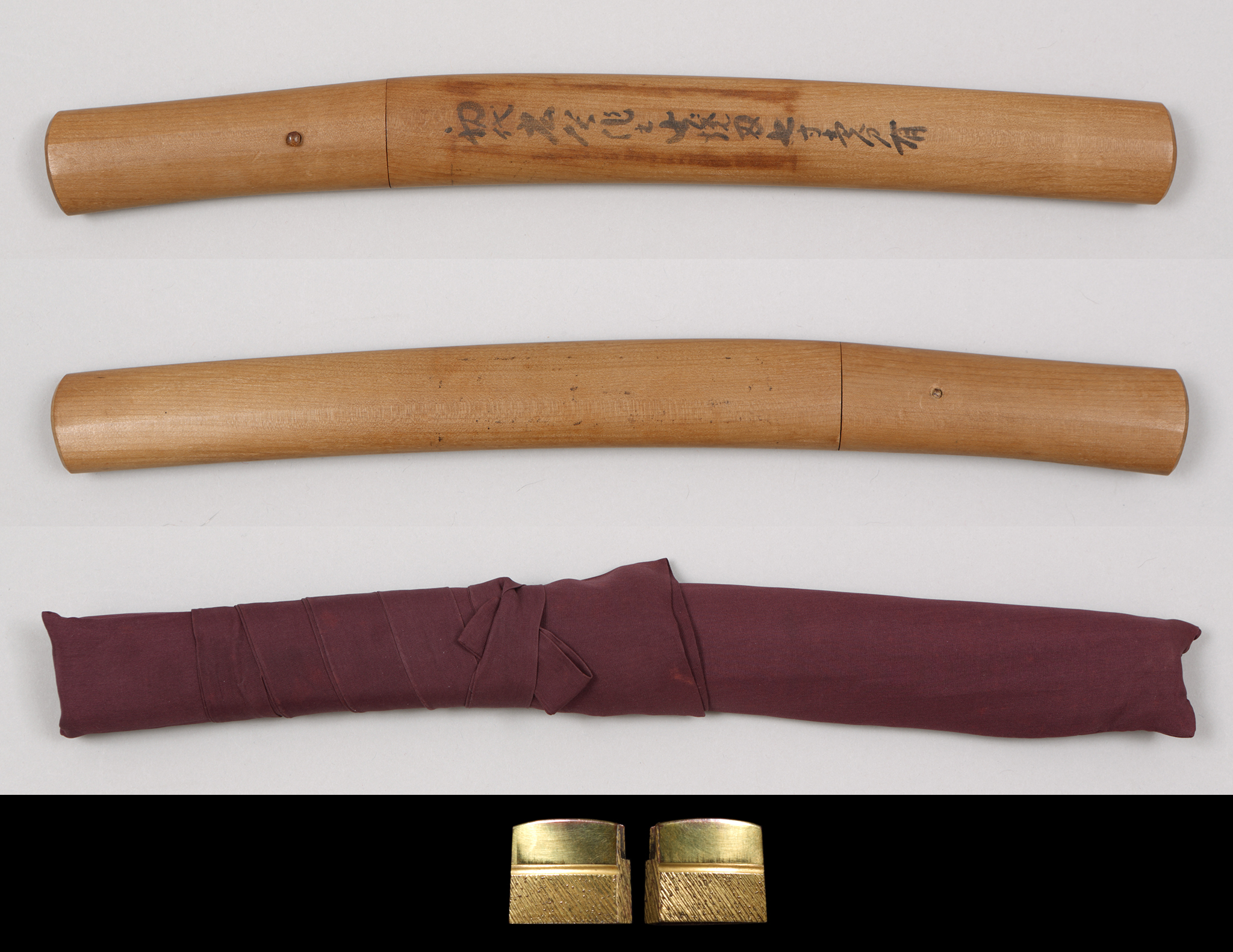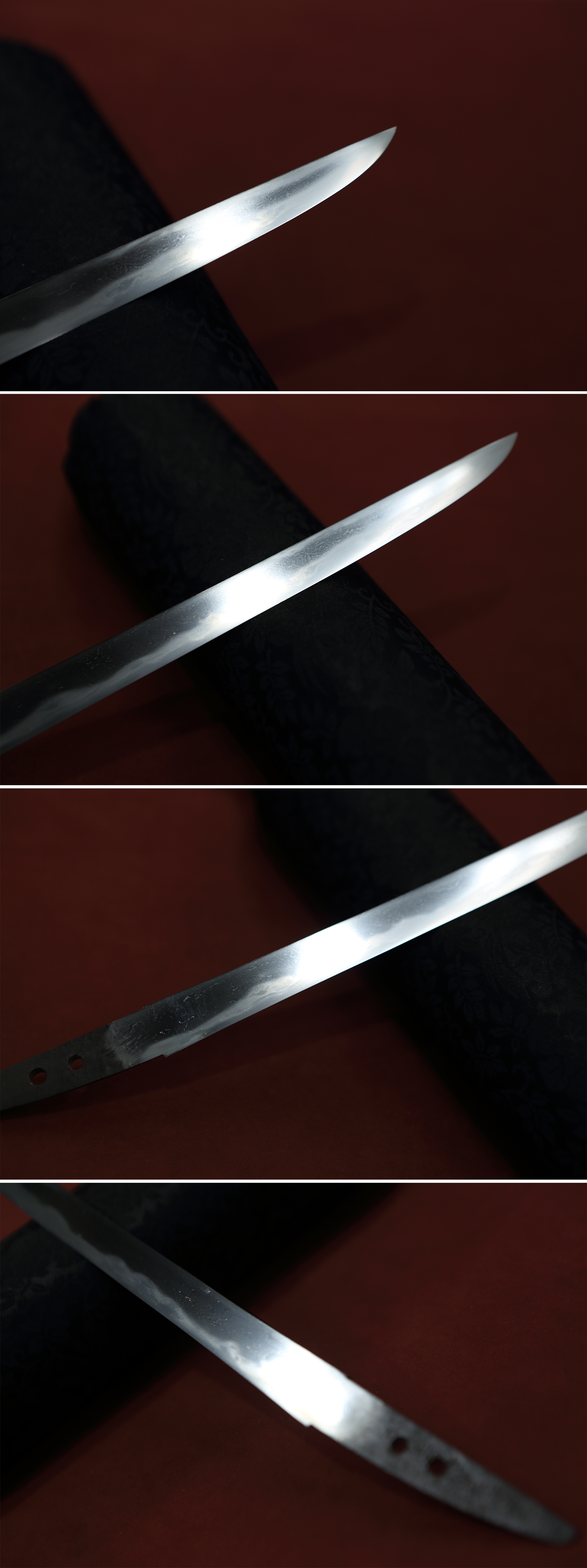[ Feature ]
Form : Hira-zukuri. Iori-mune. Both mihaba and kasane are ordinal. Takenoko-zori attached. Small size tantô form.
Nakago : Tanago-bara shape. Ubu. Saki is ha-agari, kuri-jiri. Yasurimes are katte-sagari. Two holes.
Jigane : Itame-hada. Mokumes mixed. Jinie attached. Chikei appeared.
Hamon : Gunome-midare. Nie attached. Sunagashis appeared. It becomes hita-tsura form. Muneyaki tempered.
Boushi : It runs in midare-komi. Saki is haki-kake form with flame shape. It turns long.
On clear jigane, nie attached hitatsura blade tempered. The tantô has some specificities such as takenoko-zori attached form, nakago finish in tanago-bara.
Hiroga, MITA Hyôe, who originally worked for OGAMO Saemon-no-jyô feudal lord of Ogamo area in Hôki "伯耆" province. After downfall of his master, he became a swordsmith, Saono-o"道祖尾" namely. He created the swords at Kurayoshi. He guided Sôshû Tsunahiro when Tsunahiro visited Kanayago Myôjin shrine. Then he became a pupil of Tsunahiro, and moved to Sô-shû. (cf. Kotô Meishû-roku "古刀名集録"). In the remaining swords of first generation Hiroga, there were swords which seemed to be created at Kyôto, and Hôki "伯耆" province. Hiroga school divided into Saono-o"道祖尾" family and Mita"見田" family. Saono-o"道祖尾" family has begun around Bunmei "文明"(1469 -1487). They lived at Kaji-chô of Kurayoshi during Edo period. Mita"見田" family, from Gorôzaemon-no-jyô "五郎左衛門尉", they lived at Tsuhara "津原". Later, they moved to and fro Kurayoshi. It was considered that they flourished till Shô-ô"承応"(1652-1655).
[ Conditions ] There is tiny small rusts and scratches. However, it is possible to appreciate and preserve in current status.





